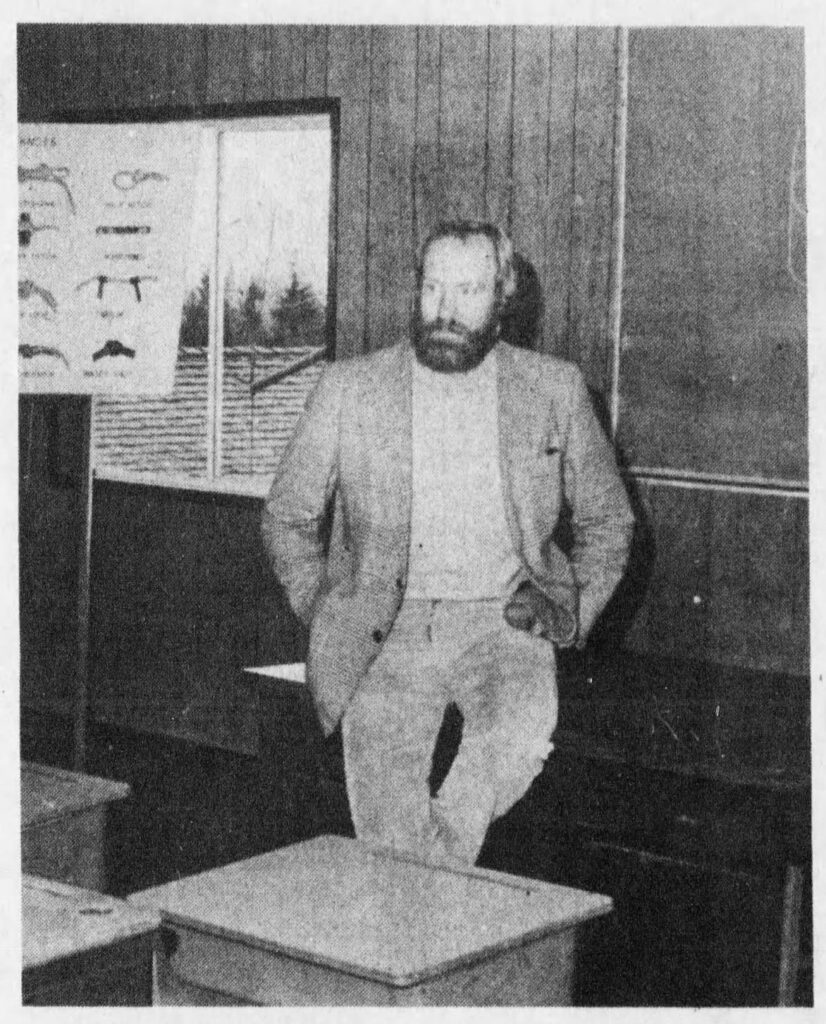We want all young people in the program to feel far stronger than they ever believed they could be.
Bill Hughes, 1977.
Alternative students were students who had behavioural issues and as a result needed their own types of special education and intervention. In 1972 behaviour of students was becoming and emphasis because it was seen as directly impacting the student’s ability to learn, and their peers’ ability to learn. The hope was to reinforce desirable behaviours, and help children cope with both known and unknown situations so they could eventually become contributing members of society.
In the early to mid-1970’s troubled youth were sent to “reform schools” but as of 1977 these institutions were eliminated. Much like the academic side of the education system in Chilliwack, there was a move away from segregation and more towards integration as to help foster the social development skills. This was no different for the juveniles with behavioural issues, there were different levels of integration and segregation based on a case by case basis. There was a system consisting of three-tiers being developed, depending on severity of the behavioural issues. The first tier was small group homes locally operated by the corrections branch. The second tier was a medium security forest camp, proposed to be located at the former Centre Creek Camp on Chilliwack Lake road. The third tier was for the more serious offenders who had exhausted all other options, and they were to be contained in maximum security facilities. The goal was to try to keep as many of the juveniles within the community and avoid the corrections system.
One of the ways to try and correct these behavioural issues in juveniles was the successful program created in 1977, and supervised by Bill Hughes, called DASH. DASH stood for Development of Attitudesm Skills and Habits. It was an adapted version of the Outward Bound program and consisted of two camps used in two phases over the course of eight weeks for troubled youths who could not function in school, their homes, or the community. The idea was that having placed the juveniles in a wilderness setting they would have to rely on and trust others around them to survive. The first phase started at Dunbar Camp which was located east of Harrison Lake, and only accessible by boat or plane so as to avoid them trying to escape. During this first phase the youth takes a dip every morning in Harrison Lake to prepare them in the event they fall in the cold water during the four day canoe trip when they leave Dunbar Camp. They were taught to fish, snare game, build shelter, forage, rock climb, and rappel. They are pushed to their limits both mentally and physically to prepare them for the next phase. The next phase is when they have to survive completely on their own without food or shelter provided to them for four days. This took place at the next camp, located at Pierce Creek Camp in Chilliwack Valley.
Within the school district there were programs for these behaviourally challenged children. There was a special placement program established for the students labelled as “difficult,” and the “very difficult” students were to be placed in “sheltered classes.” The concept behind this was born out of students that did not respond to any other interventions. These special classes were limited to a 20 student maximum with only 2 to 4 “moderately disturbed” students amongst non-disturbed students who would be pre-screened for stability and motivation before being placed in these classes. The students participating in these special classes were not to be in them longer than 2 or 3 years. There was a suggestion to decrease the class size to less than 8 students in order to provide behavioural and academic remediation.

